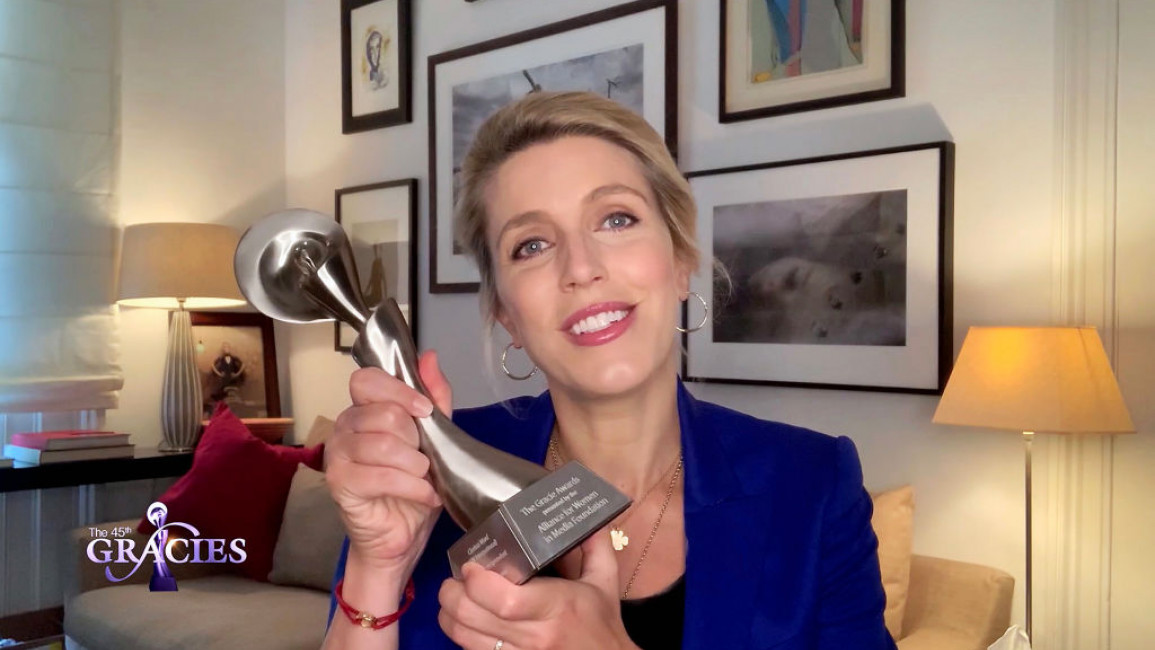CNN journalist rebukes 'inaccurate' Afghan hijab meme
A meme showing two pictures of CNN journalist Clarissa Ward in Afghanistan have been criticised as "inaccurate", days after the Taliban’s takeover of Kabul.
The two images were screenshots of the chief international correspondent reporting on the Taliban's capture of Kabul.
One showed Ward without a headscarf and the other of her wearing a black headscarf covering her hair, neck, and shoulders.
The meme appeared to suggest that only after the Taliban takeover were women in Kabul wearing the hijab.
While there is no suggestion that the Taliban have loosened the dress code for women - with evidence pointing to a clampdown - Ward said she had always covered her hair when reporting on the streets of Kabul.
"This meme is inaccurate," the journalist wrote on Twitter on 16 August, the day after the Taliban seized Kabul and chaotic scenes were witnessed at the capital's airport.
"The top photo (without a hijab) is inside a private compound. The bottom (with a hijab) is on the streets of Taliban held Kabul," she said, dispelling the implications.
She did say that while she always wore a headscarf in public in Kabul, she did not wear one with her "hair fully covered and abbaya". An abaya is a robe-like dress worn by women in parts of the Middle East and North Africa that covers the body, arms, and legs.
This meme is inaccurate. The top photo is inside a private compound. The bottom is on the streets of Taliban held Kabul. I always wore a head scarf on the street in Kabul previously, though not w/ hair fully covered and abbaya. So there is a difference but not quite this stark. pic.twitter.com/BmIRFFSdSE
— Clarissa Ward (@clarissaward) August 16, 2021
Concerns have mounted, both internally and internationally, about how the Taliban will treat Afghan women given their track record of treating females as second-class citizens unable to get an education or pursue a career.
Reporting on Kabul’s streets for CNN, Ward asked a Taliban commander, Assad Massoud Khistani, directly about whether the insurgents would protect women's rights.
Khistani said: "Women can continue their life... They can go to their school and they can continue their education."
But, he added, they must wear the "Islamic hijab".
Khistani clarified that this was not like what Ward was wearing - a scarf covering her hair. Women must also cover their faces, he said.
"So you mean niqab," Ward said. A niqab covers the hair, face, and shoulders, with a cut in the fabric for the eyes.
Ward’s interview spotlights one of many claims from the Taliban that their treatment of women will be more liberal than when they last ruled Afghanistan in 2001, where women were forced to wear the burqa.
This thick garment completely covers the hair and face, with just a thin mesh for the woman to see out of.
The Taliban have invited women to join its government although many NGOs and governments have been sceptical about such overtures given the militants' track record of areas under their control.
However, there are reports of Afghan girls no longer going to school across the country and many women are now only venturing out in Kabul’s streets wearing a burqa.
Female Afghan journalists have continued to broadcast on television, however, some wearing a headscarf and showing parts of their hair. For example, journalist Beheshta Arghband interviewed a Taliban media representative on TOLO News wearing a headscarf.



